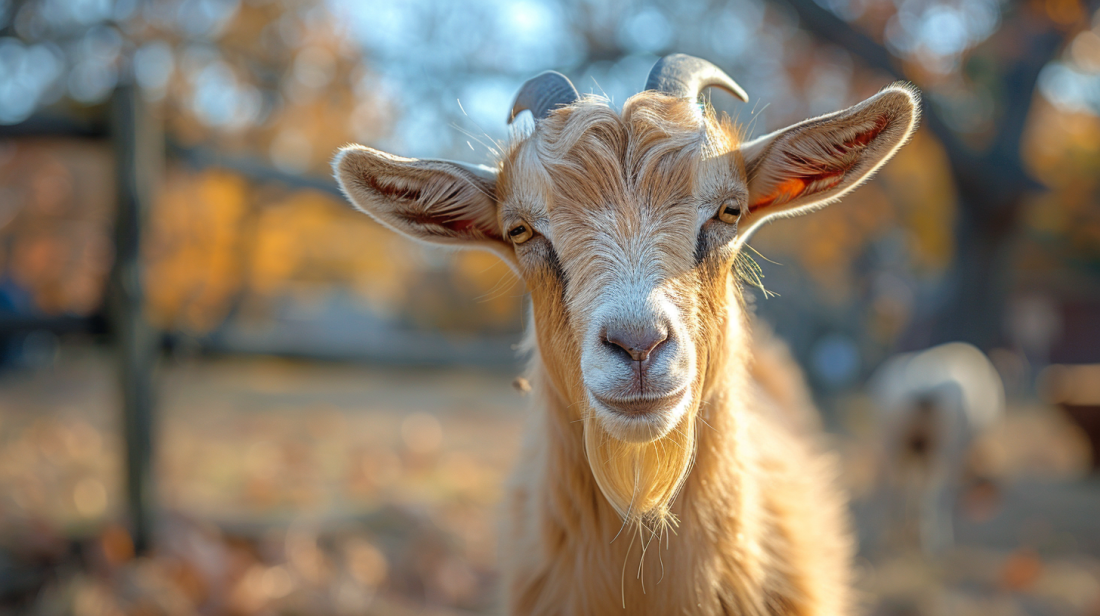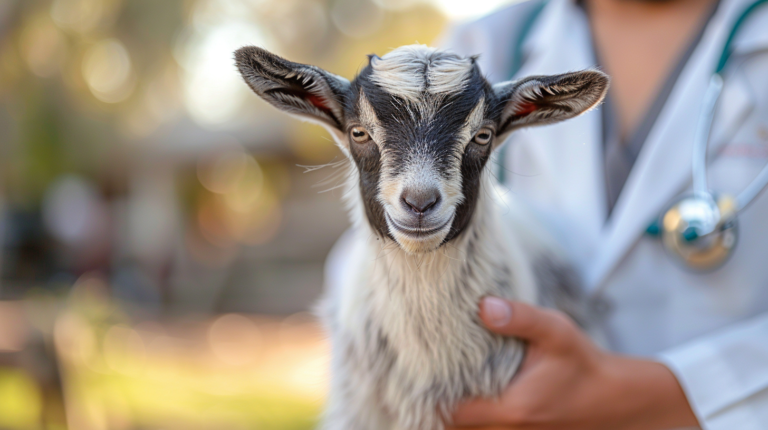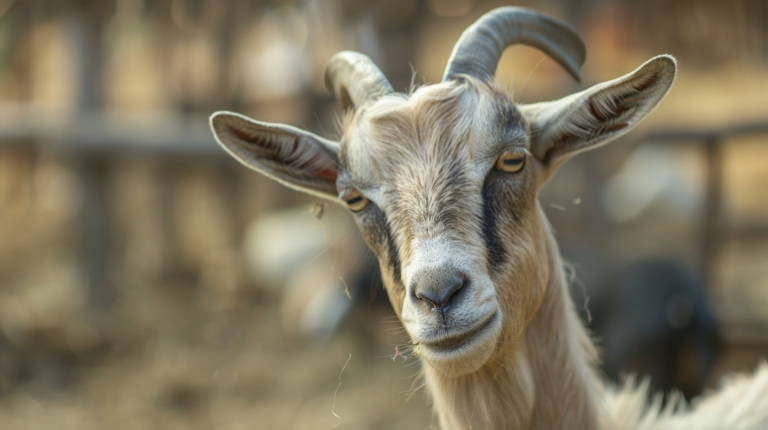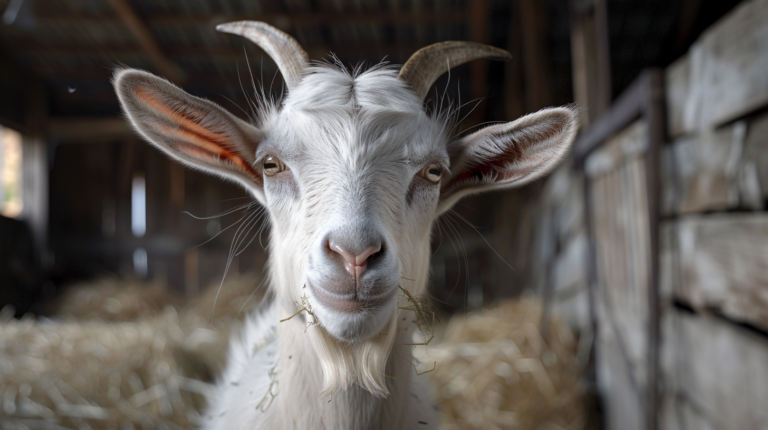Learn to identify intestinal parasites in goats with these 9 alarming signs. Expert tips for early detection, treatment, and prevention to keep your goats healthy.
Table of Contents
Are you concerned about your goat’s health and wondering if they might be suffering from intestinal parasites? You’re not alone. Intestinal parasites in goats represent one of the most significant health challenges facing goat owners worldwide, affecting both productivity and animal welfare. These microscopic invaders can cause serious health complications if left untreated, making early detection crucial for every responsible goat owner.
Whether you’re a seasoned goat farmer or new to caprine care, understanding the warning signs of parasitic infections can mean the difference between a thriving herd and devastating losses. This comprehensive guide will equip you with the knowledge to identify, prevent, and manage intestinal parasites in your goats effectively.
| # | Alarming Sign | Description | Severity Level | Action Required |
|---|---|---|---|---|
| 1 | Pale Mucous Membranes (FAMACHA) | Gums, inner eyelids appear white or very pale pink indicating severe anemia | Critical | Immediate veterinary attention |
| 2 | Diarrhea or Soft Stools | Persistent loose, watery, or unusually soft feces with possible blood or mucus | High | Fecal testing and treatment |
| 3 | Rapid Weight Loss | Noticeable body condition decline despite adequate feed availability | High | Immediate evaluation |
| 4 | Rough, Dull Coat | Hair appears dry, brittle, lacks shine, and may be standing up or patchy | Medium | Monitor and test |
| 5 | Bottle Jaw (Submandibular Edema) | Fluid accumulation under the jaw causing visible swelling | Critical | Emergency treatment |
| 6 | Reduced Appetite | Decreased interest in feed, slower eating, or complete feed refusal | Medium | Investigate cause |
| 7 | Lethargy and Weakness | Reduced activity, reluctance to move, lying down frequently | Medium | Clinical assessment |
| 8 | Stunted Growth (Young Goats) | Failure to meet expected growth rates compared to herd mates | High | Deworming protocol |
| 9 | Abnormal Behavior | Isolation from herd, grinding teeth, excessive scratching or rubbing | Low-Medium | Observation and testing |
Understanding Intestinal Parasites in Goats
Intestinal parasites in goats encompass a diverse group of organisms that live within the digestive system, feeding off nutrients and causing various health problems. These parasites include nematodes (roundworms), cestodes (tapeworms), trematodes (flukes), and protozoa like coccidia.
Recent studies reveal alarming statistics about parasitic infections in goats. Research indicates that up to 95% of goats may be infected with at least one type of gastrointestinal parasite, with some regions showing even higher prevalence rates. The economic impact extends beyond individual animal health, affecting milk production, weight gain, reproductive performance, and overall herd productivity.

Common Types of Intestinal Parasites
Nematodes (Roundworms)
- Haemonchus contortus (Barber pole worm)
- Trichostrongylus species
- Teladorsagia circumcincta
- Cooperia species
Cestodes (Tapeworms)
- Moniezia expansa
- Moniezia benedeni
Trematodes (Flukes)
- Fasciola hepatica (Liver fluke)
- Dicrocoelium dendriticum
Protozoa
- Eimeria species (Coccidia)
9 Alarming Signs of Intestinal Parasites in Goats
1. Pale Mucous Membranes and Anemia
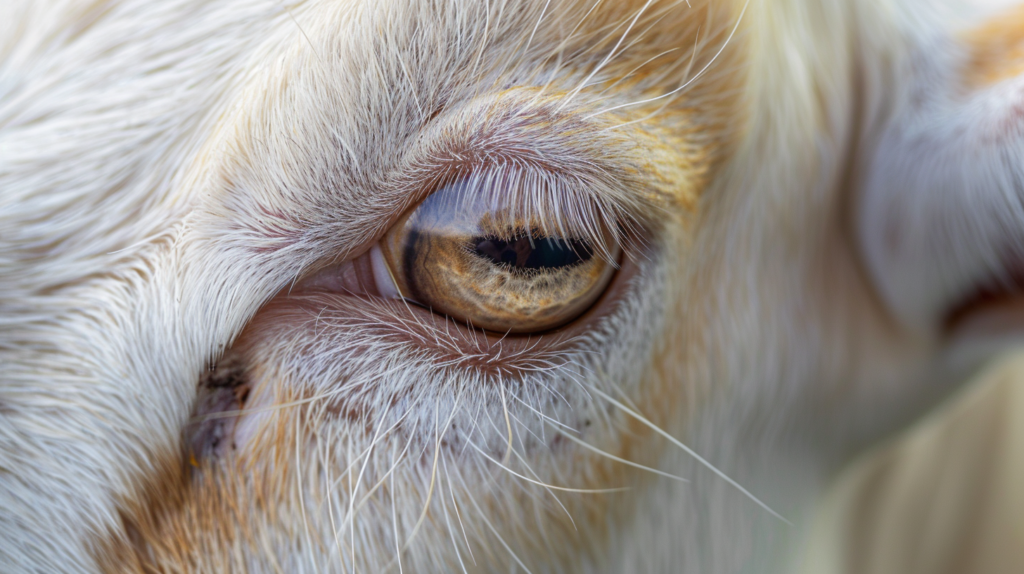
One of the most critical signs of intestinal parasites, particularly blood-sucking worms like Haemonchus contortus, is the development of pale mucous membranes. Check your goat’s inner eyelids, gums, and vulva for color changes.
What to Look For:
- Pale pink or white coloration instead of healthy red-pink
- Weakness and lethargy
- Rapid breathing or panting
- Reduced exercise tolerance
The “FAMACHA” system, developed by South African researchers, uses eyelid color as a diagnostic tool. This system rates eyelid color on a scale of 1-5, with 1 being deep red (healthy) and 5 being pale white (severely anemic).
2. Bottle Jaw (Submandibular Edema)
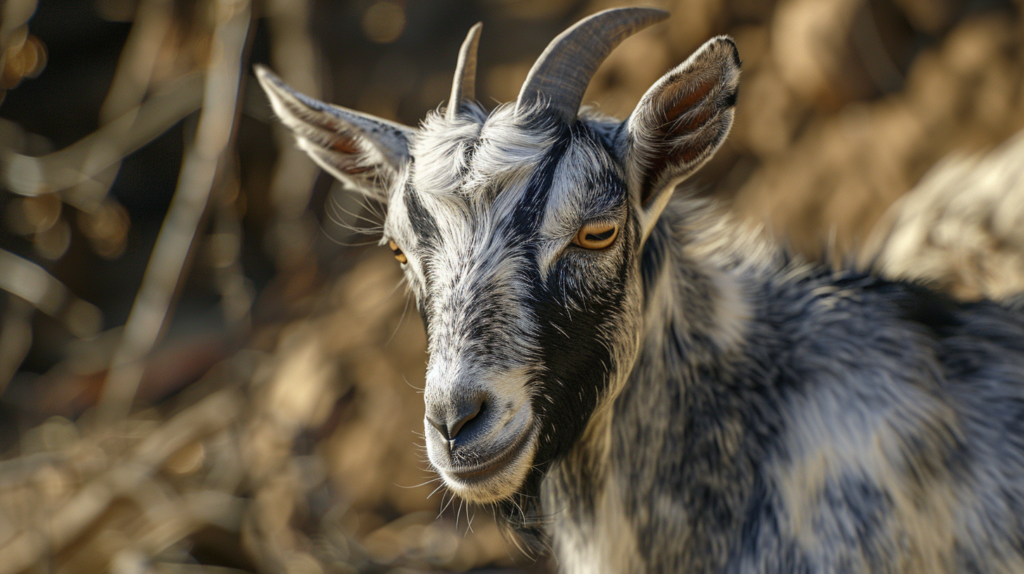
Bottle jaw is a distinctive swelling under the jaw that occurs when protein levels drop due to parasitic infection. This condition results from hypoproteinemia caused by blood loss or protein-losing enteropathy.
Characteristics:
- Soft, fluid-filled swelling under the jaw
- Non-painful to touch
- May fluctuate in size
- Often accompanied by other anemia signs
3. Diarrhea and Digestive Disturbances
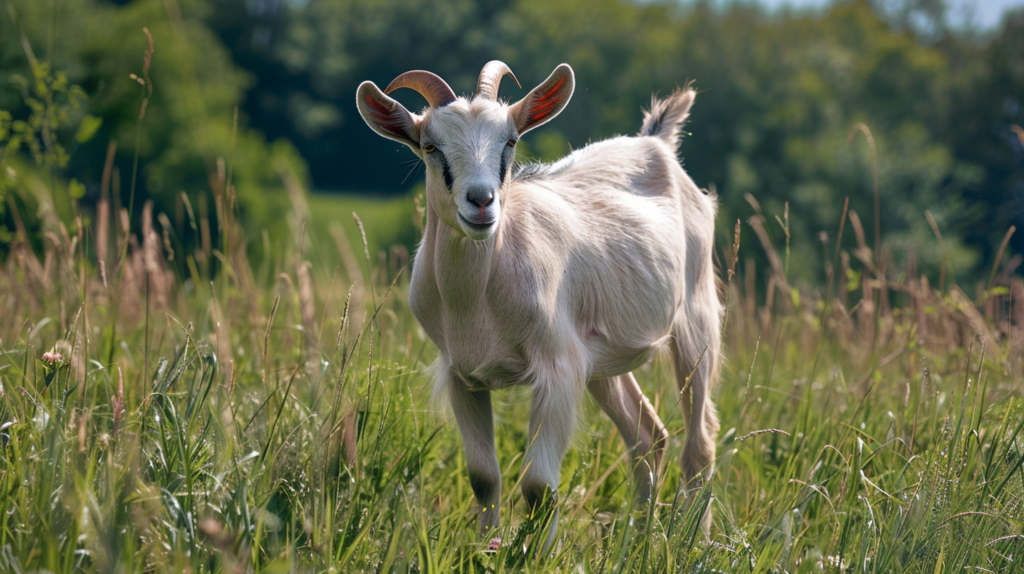
Gastrointestinal parasites frequently cause digestive upset, ranging from mild loose stools to severe diarrhea. The type and severity of diarrhea can provide clues about the parasite species involved.
Diarrhea Patterns:
- Intermittent loose stools (common with Trichostrongylus)
- Watery diarrhea with mucus
- Blood-tinged feces (severe infections)
- Alternating diarrhea and constipation
4. Weight Loss Despite Good Appetite
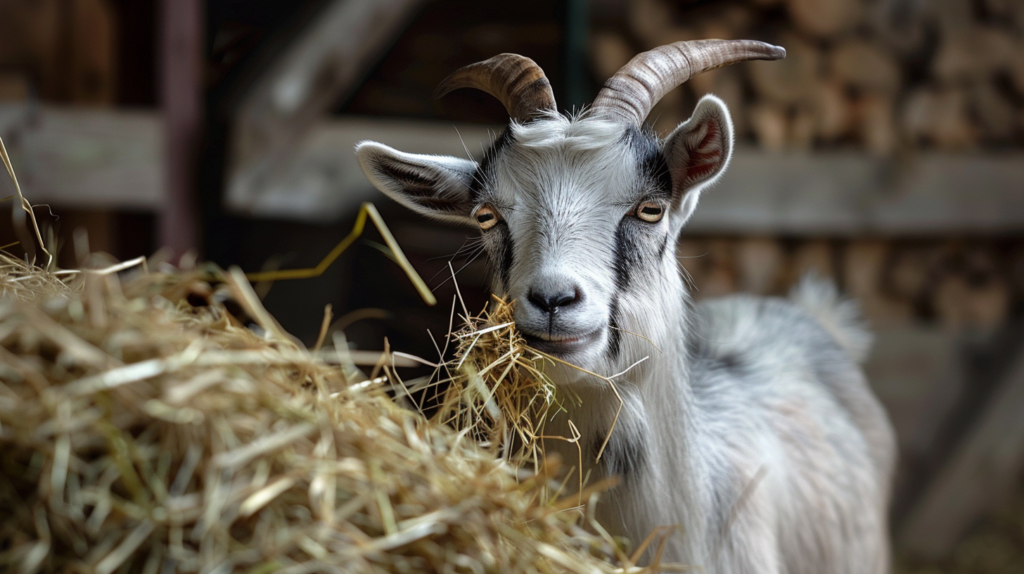
Many goats with , Intestinal Parasites in Goats , maintain their appetite while experiencing significant weight loss. This occurs because parasites consume nutrients or damage the intestinal lining, reducing absorption efficiency.
Monitoring Weight Loss:
- Regular body condition scoring
- Weekly weight checks during high-risk periods
- Noting changes in muscle mass and fat deposits
- Observing hip bone and spine prominence
5. Rough, Dull Hair Coat

A healthy goat’s coat should be shiny and smooth. Parasitic infections often cause coat quality deterioration due to nutrient deficiencies and stress on the animal’s system.
Coat Changes:
- Loss of natural shine and luster
- Increased shedding or patchy hair loss
- Coarse, brittle texture
- Slower coat growth or delayed seasonal changes
6. Reduced Milk Production

For dairy goats, Intestinal Parasites in Goats, can significantly impact milk yield and quality. This reduction occurs due to nutrient diversion, stress, and the energy cost of fighting infection.
Milk Production Changes:
- Gradual decline in daily milk yield
- Changes in milk composition
- Reduced milk fat and protein content
- Shorter lactation periods
7. Behavioral Changes and Depression
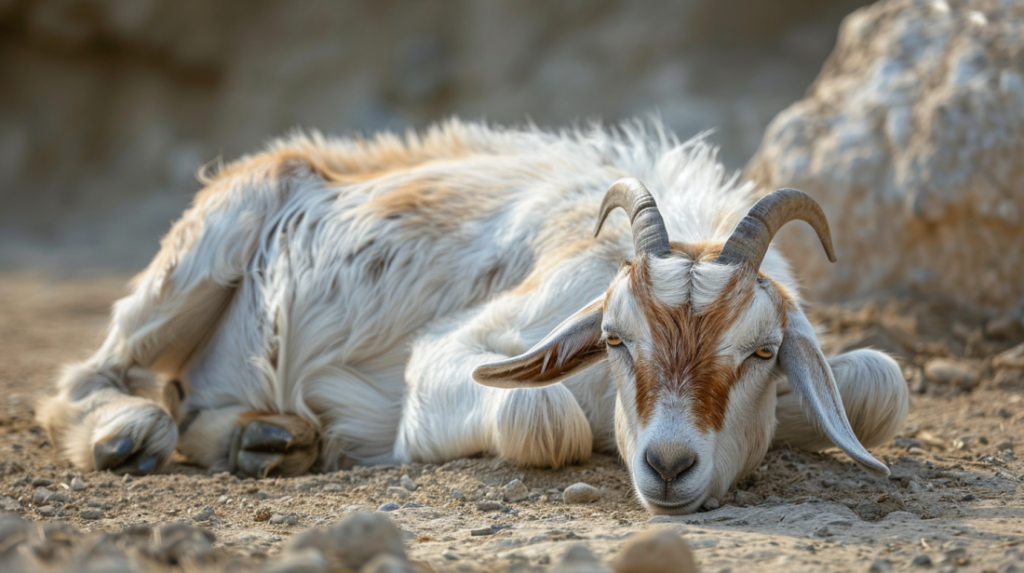
Parasitic infections can cause notable behavioral changes as goats struggle with discomfort and nutrient deficiencies. These changes often precede more obvious physical symptoms.
Behavioral Indicators:
- Reduced activity levels
- Separation from the herd
- Decreased interest in food or treats
- Reduced vocalization
- Hunched posture or signs of abdominal discomfort
8. Growth Retardation in Young Goats

Kids and young goats are particularly susceptible to parasitic infections, which can severely impact their growth and development. This is especially concerning as it affects their future productivity and health.
Growth Impact:
- Slower weight gain compared to peers
- Delayed sexual maturity
- Reduced frame size
- Poor muscle development
- Increased susceptibility to other diseases
9. Increased Susceptibility to Other Diseases
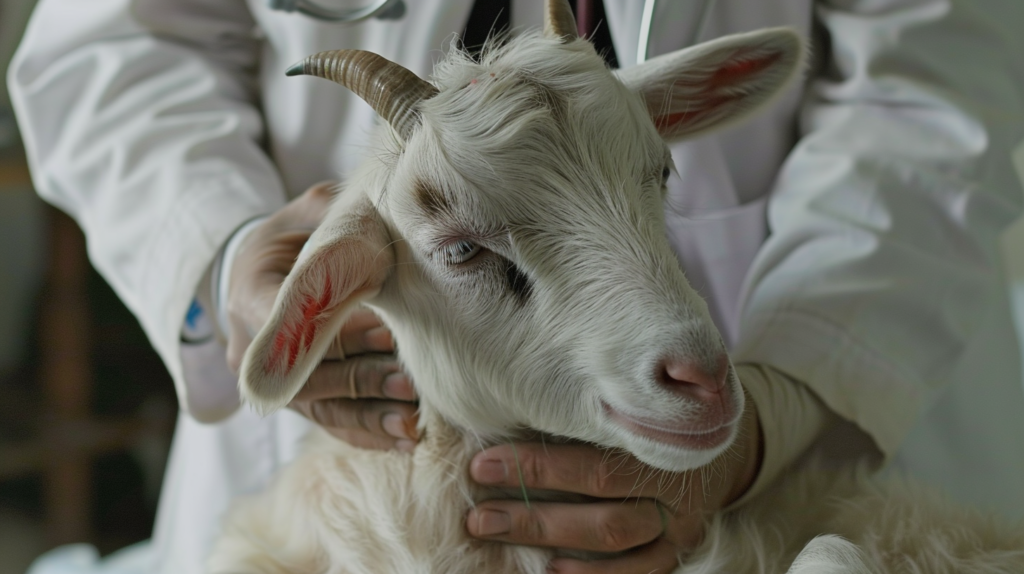
Parasitic infections compromise the immune system, making goats more vulnerable to bacterial, viral, and fungal infections. This immunosuppression can lead to secondary health problems.
Secondary Health Issues:
- Increased respiratory infections
- Poor wound healing
- Reduced vaccine effectiveness
- Higher mortality rates from other diseases
Risk Factors and Prevention Strategies
| Risk Factor | Risk Level | Description | Prevention Strategies |
|---|---|---|---|
| Overcrowded Pastures | High | High stocking density increases parasite transmission and reduces pasture quality |
|
| Wet, Humid Conditions | High | Moisture promotes parasite larvae survival and development in environment |
|
| Poor Nutrition | High | Inadequate nutrition weakens immune system and increases susceptibility |
|
| Young Animal Age | High | Kids and young goats have undeveloped immunity to parasites |
|
| Stress Factors | Medium | Pregnancy, lactation, transport, and environmental stress reduce immunity |
|
| Contaminated Water Sources | Medium | Standing water and contaminated sources harbor parasite larvae |
|
| Seasonal Patterns | Medium | Spring and early summer create ideal conditions for parasite development |
|
| New Animal Introduction | Low-Medium | New animals may introduce different parasite strains to the herd |
|
Understanding risk factors helps in developing effective prevention strategies. Climate, management practices, and herd characteristics all influence parasite prevalence.
Environmental Risk Factors
Climate Conditions:
- High humidity and warm temperatures
- Spring through early summer seasons
- Areas with poor drainage
- Overcrowded pastures
Management Factors:
- Feeding hay or grain on the ground
- Inadequate quarantine procedures
- Mixed-age grazing systems
- Poor sanitation practices
Prevention Best Practices
Pasture Management:
- Rotational grazing systems
- Avoid overgrazing
- Remove manure regularly
- Maintain proper stocking rates
Nutritional Support:
- Provide high-quality feed
- Ensure adequate protein intake
- Supplement with essential minerals
- Maintain proper body condition
Monitoring and Testing:
- Regular fecal egg counts
- FAMACHA scoring
- Body condition scoring
- Periodic veterinary examinations
Treatment and Management Options
Effective parasite control requires an integrated approach combining chemical dewormers, management practices, and alternative therapies.
Chemical Dewormers
Anthelmintic Classes:
- Benzimidazoles (Fenbendazole, Albendazole)
- Macrocyclic lactones (Ivermectin, Moxidectin)
- Imidazothiazoles (Levamisole)
- Amino-acetonitrile derivatives (Monepantel)
Resistance Management: Unfortunately, anthelmintic resistance is becoming increasingly common. Studies show varying levels of resistance across different regions, making strategic use of dewormers crucial.
Alternative and Complementary Approaches
Herbal Remedies:
- Wormwood (Artemisia absinthium)
- Garlic supplements
- Copper oxide wire particles
- Tannin-rich plants
Biological Control:
- Beneficial nematode species
- Fungal parasites of nematodes
- Selective breeding for resistance
When to Consult a Veterinarian
Recognizing when professional help is needed can prevent serious complications and deaths in your herd.
Emergency Situations:
- Severe anemia (FAMACHA score 4-5)
- Sudden onset of symptoms
- Multiple animals affected simultaneously
- Lack of response to initial treatment
Routine Veterinary Care:
- Annual herd health examinations
- Fecal egg count monitoring
- Deworming protocol development
- Nutritional assessment
Economic Impact and Productivity Losses
The economic consequences of Intestinal Parasites in Goats extend far beyond treatment costs. Understanding these impacts helps justify investment in prevention programs.
Direct Costs
Treatment Expenses:
- Anthelmintic medications
- Veterinary consultation fees
- Diagnostic testing costs
- Labor for treatment administration
Mortality Losses:
- Replacement animal costs
- Lost genetic potential
- Reduced herd size
Indirect Costs
Production Losses:
- Reduced milk yield
- Decreased weight gain
- Poor reproductive performance
- Increased feed conversion ratios
Long-term Impacts:
- Reduced animal longevity
- Increased replacement rates
- Higher veterinary costs
- Decreased market value
| Timeline | Diagnostic Method | Treatment Action | Priority | Expected Outcome |
|---|---|---|---|---|
| Day 0 Initial Assessment |
• Visual examination • FAMACHA scoring • Body condition assessment |
|
Urgent | Identification of affected animals and severity assessment |
| Day 1-2 Laboratory Testing |
• Fecal egg count (FEC) • Larval culture • Parasite identification |
|
High | Specific parasite identification and burden quantification |
| Day 3-5 Treatment Initiation |
• Review laboratory results • Assess drug resistance history • Re-evaluate clinical signs |
|
Urgent | Parasite elimination begins, clinical improvement expected |
| Day 7-10 Response Monitoring |
• Clinical re-examination • FAMACHA re-scoring • Appetite and behavior assessment |
|
High | Visible clinical improvement in appetite, energy, and color |
| Day 14-21 Efficacy Assessment |
• Follow-up fecal egg count • Complete physical examination • Body weight measurement |
|
High | 90%+ reduction in egg count, improved body condition |
| Day 30-45 Recovery Phase |
• Monthly fecal monitoring • Body condition scoring • Production assessment |
|
Routine | Full recovery, return to normal production levels |
| Ongoing Prevention |
• Regular FAMACHA checks • Seasonal fecal monitoring • Pasture assessment |
|
Routine | Prevention of future outbreaks, maintained herd health |
Seasonal Considerations and Monitoring
Parasite loads typically follow seasonal patterns, with peak transmission occurring during warm, humid months. Understanding these patterns helps optimize monitoring and treatment schedules.
Spring and Summer Challenges
Increased Risk Factors:
- Higher temperatures promoting larval development
- Increased moisture from rainfall
- Fresh pasture growth
- Parturition stress in breeding females
Enhanced Monitoring:
- Weekly FAMACHA scoring
- Bi-weekly fecal egg counts
- Daily observation of high-risk animals
- Pasture larval monitoring
Fall and Winter Management
Reduced Risk Period:
- Lower environmental larval survival
- Decreased transmission rates
- Opportunity for pasture rest
- Time for strategic treatments
Advanced Diagnostic Techniques
Modern parasitology offers several diagnostic tools beyond traditional fecal examinations.
Laboratory Tests
Fecal Egg Counts (FEC):
- Quantitative assessment of parasite burden
- Species identification capabilities
- Monitoring treatment effectiveness
- Determining deworming necessity
Larval Culture:
- Species-specific identification
- Resistance testing capabilities
- Understanding parasite populations
- Guiding treatment decisions
Blood Tests:
- Packed cell volume (PCV) measurements
- Protein level assessment
- Liver function evaluation
- Nutritional status indicators
On-Farm Monitoring Tools
FAMACHA System:
- Anemia detection through eyelid color
- Quick screening tool
- Reduces unnecessary treatments
- Cost-effective monitoring
Body Condition Scoring:
- Nutritional status assessment
- Production performance indicator
- Treatment response monitoring
- Herd management tool
Regional Variations and Adaptations
Parasite prevalence and species composition vary significantly by geographic region, requiring location-specific management strategies.
Climate-Specific Considerations
Temperate Regions:
- Seasonal transmission patterns
- Winter die-off of larvae
- Spring emergence challenges
- Summer peak infections
Tropical and Subtropical Areas:
- Year-round transmission
- Multiple species complexity
- Higher infection intensities
- Continuous management requirements
Farming System Adaptations
Extensive Grazing Systems:
- Rotational grazing benefits
- Natural host-parasite balance
- Reduced chemical inputs
- Sustainable management practices
Intensive Production:
- Higher stocking densities
- Increased transmission risk
- Greater monitoring requirements
- Biosecurity importance
Future Directions in Parasite Control
The field of parasite control continues to evolve with new research and technologies offering promising solutions.
Genetic Resistance
Selective Breeding:
- Identifying resistant genetics
- Developing breeding programs
- Maintaining production traits
- Long-term sustainability
Genomic Tools:
- Marker-assisted selection
- Genetic testing capabilities
- Breeding value estimation
- Accelerated genetic progress
Innovative Management Approaches
Precision Agriculture:
- GPS-guided grazing management
- Automated monitoring systems
- Data-driven decision making
- Optimized resource utilization
Integrated Pest Management:
- Multiple control strategies
- Reduced chemical dependence
- Environmental sustainability
- Long-term effectiveness
Frequently Asked Questions
Everything you need to know about Intestinal Parasites in Goats
During high-risk periods (spring through early summer), check your goats weekly using the FAMACHA system and daily observation. During lower-risk periods, bi-weekly monitoring is generally sufficient. However, maintain daily observation for any changes in behavior, appetite, or appearance.
Yes, some goat parasites are zoonotic, meaning they can infect humans. However, proper hygiene practices, including handwashing after handling animals and avoiding contact with contaminated areas, significantly reduce transmission risk. Always consult healthcare providers if you have concerns about zoonotic diseases.
Treatment involves using anthelmintic medications to eliminate existing parasites, while prevention focuses on management practices that reduce parasite exposure and transmission. Effective prevention includes pasture management, nutritional support, and strategic monitoring. A combination of both approaches provides the best long-term results.
While some natural products show promise in research settings, their effectiveness varies significantly. Herbal remedies and organic approaches may help reduce parasite loads but should not replace proven treatments in severe infections. Always consult with a veterinarian before relying solely on alternative treatments.
Monitor treatment effectiveness through follow-up fecal egg counts 10-14 days after treatment, continued FAMACHA scoring, and observation of clinical signs. If parasite levels remain high or symptoms persist, consult your veterinarian about potential resistance issues or alternative treatment strategies.
Absolutely. Stress from factors like poor nutrition, overcrowding, weather extremes, or management changes can suppress immune function and increase susceptibility to parasitic infections. Minimizing stress through proper management practices is an important component of parasite prevention.
No questions found matching your search. Try different keywords or browse all questions above.
For more expert pet care tips and product recommendations, visit BlithePet.com — your trusted source for pet wellness.
Conclusion
Intestinal parasites in goats represent a serious health challenge that requires vigilant monitoring, proper management, and strategic treatment approaches. The nine alarming signs outlined in this guide—pale mucous membranes, bottle jaw, diarrhea, weight loss, poor coat quality, reduced milk production, behavioral changes, growth retardation, and increased disease susceptibility—serve as your early warning system for parasitic infections.
Remember that effective parasite control goes beyond simply treating infections when they occur. Implementing comprehensive prevention strategies, including proper pasture management, nutritional support, and regular monitoring, provides the foundation for long-term herd health. Stay informed about the latest research and treatment options, work closely with your veterinarian, and maintain detailed records of your management practices.
By staying alert to these warning signs and implementing proactive management strategies, you can protect your goats from the serious health consequences of Intestinal Parasites in Goats while maintaining a productive and healthy herd.
Have a similar experience with your goat’s health? Share it in the comments below!

